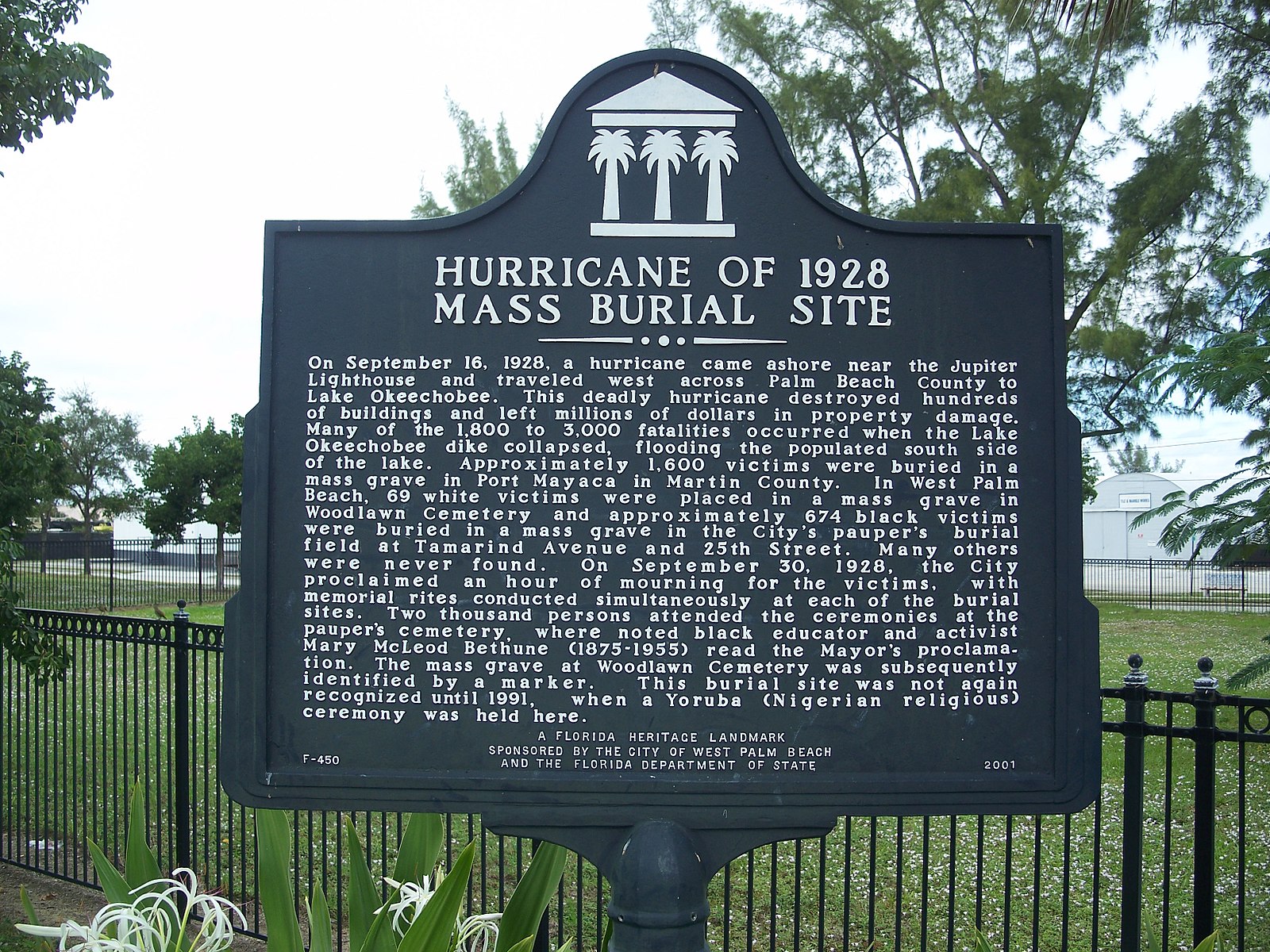
On September 16, 1928, the deadliest hurricane in Florida’s history struck West Palm Beach. As it moved inland it drove the waters of Lake Okeechobee against the mud levees on its shores. When the levees failed, a surge inundated the communities of Okeechobee City, South Bay and Belle Glade, causing thousands of deaths.

The storm began as a disturbance near the Cape Verde Islands in early September. It was tracked across the Atlantic and by Sept. 12th it struck the Leeward Islands. The amount of warning time varied by island, but Guadeloupe apparently received no advanced warning, and the unprepared island suffered 1200 deaths. The total for other nearby islands where the warnings were better was less than fifty.

The hurricane ramped up its intensity as it approached Puerto Rico. It struck the next day with estimated winds of 200 mph (320 km/hr). In contemporary terms that’s Category-Five on the Saffir-Simpson scale making this hurricane one of only two hurricanes of that intensity known to have hit Puerto Rico. Tens of thousands of homes were destroyed and the island’s coffee industry received a blow from which it never recovered. Leaving 312 people dead, it became known on the island as the San Felipe Segundo hurricane. It was the second memorable hurricane to hit Puerto Rico on San Felipe’s feast day (the first was in 1876.)
The storm continued its relentless track through the Turks and Caicos and Bahama Islands. There was massive destruction but due to adequate warnings the casualties were low.
Richard Gray, Meteorologist in Charge in Miami, thought that the storm would recurve and not strike south Florida, but warnings were issued from Miami to Titusville. Disruption of communications made tracking the center of the storm difficult, so it came as a surprise on the evening of Sept. 16th when the eye passed over West Palm Beach. As the hurricane traveled over the lake to the west of the city, its winds shifted from northerly to southerly. This sloshed the waters of the shallow lake first against the southern dikes, then across to the northern ones. The meager dried-mud dikes failed on both sides, causing a flash floods that caught people huddled in their homes unable to escape.
Eventually, the hurricane did recurve, over western Florida. It then tracked northeastward over coastal northern Florida, Georgia, and South Carolina, dumping tropical rains along the way.

The death toll in the Lake region were in the thousands. Public health concerns and persistent flood waters out-weighed the need for accounting for all the dead, and the bodies were disposed of in either mass graves or burnt on huge pyres. The Red Cross estimate of 1,836 dead stood for a long while, but recent re-evaluations put the total in excess of 2,500. The majority of the deaths were migrant farm workers, mainly of African-American descent. White victims were buried with ceremony, whereas African-American ones were burned in funeral pyres with the ashes buried in mass graves with no markers. Many reports state that surviving African-Americans were forced to recover dead bodies and to do other recovery work without pay.

The tragedy led to the construction of the Hoover Dike around the Lake and the formation of the Okeechobee Flood Control District, to oversee flood control measures in the area. The story of the hurricane and its impact on African-Americans was the impetus for Zoral Neale Hurston’s novel Their Eyes Were Watching God.